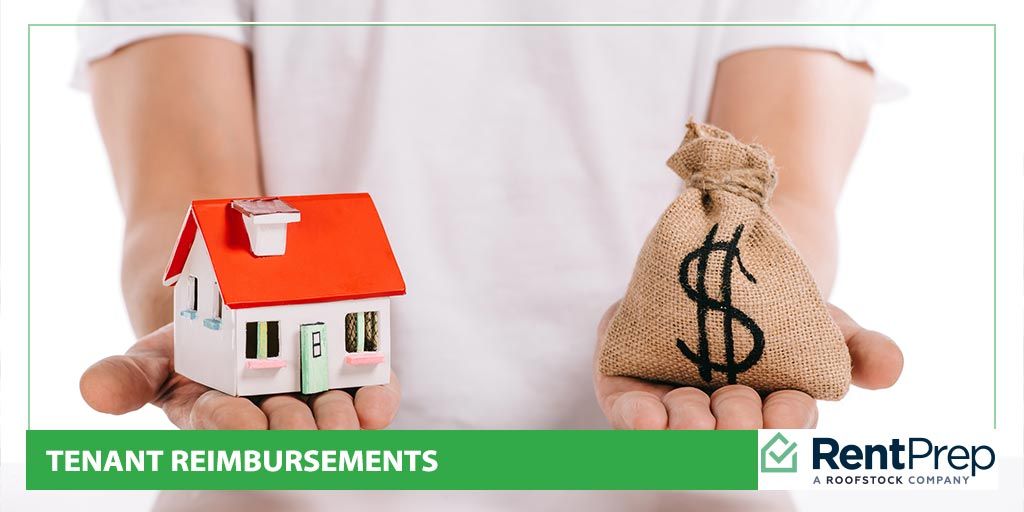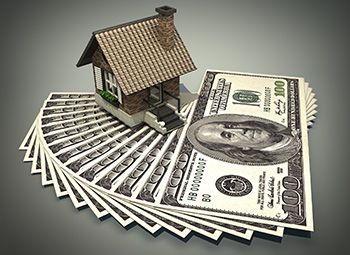
Remaining successful in the rental industry requires constant improvements to your properties. Tenants expect properties that align with the current state of the market, and they may even be willing to make some of those changes themselves. In commercial spaces, it’s common for tenants to build out properties to fit their needs.
Offering reimbursements to motivated tenants is a great way to continually upgrade properties in a unique way. Even when you’re not considering changes to an occupied property, the tenants may have different ideas. Utilizing those ideas to improve your property is a smart long-term option.
Learn what you can do with our complete guide to tenant reimbursements today.
A Table Of Contents On Tenant Reimbursements
Tenant reimbursements require available funds, but they may add extra value to your property beyond that cost. Should you offer this option to tenants? Learn more now:
- What Are Tenant Reimbursements?
- The Benefits Of Tenant Reimbursement For Improvements
- Successful Tenant Reimbursements: Must-Do Steps
- FAQs On Tenant Reimbursements For Improvements
- Try Tenant Reimbursements For Improvements Today
What Are Tenant Reimbursements?

Tenant reimbursements are payments made to tenants through a loan, reduced rent, or direct payment to cover the cost of capital improvements to the property. These improvements come in many varieties, but reimbursements typically only apply when the improvements are permanent or structural changes to the rental property.
Working with tenant reimbursements for improvements is a complex topic and something that many landlords haven’t tried. Commercial landlords are more familiar with the idea of improvements. Building to suit for tenants before move-in is common in commercial leases, and an allowance for additional upgrades is sometimes negotiated into the details as well.
However, landlords in the residential space are not as likely to be familiar with the idea of reimbursements and when they may be applied. In many cases, landlords use what is known as a tenant improvement allowance to handle rental property improvements.
This sets aside a specific amount of money for specified improvements. The landlord will reimburse the tenant for improvement costs within this amount. Some landlords include tenant improvement allowances (TIAs) in lease contracts to secure great tenants and fast.
No-Gos For Improvement Allowances
Before learning more about improvement reimbursements and allowances, it’s essential to recognize that the following types of improvements should be excluded when considering tenant reimbursements:
- Improvements for a tenant’s specific wants or needs
- Improvements that won’t add value to the property
- Any removable improvements (electronics, furniture, etc.)
- Building improvements in communal areas outside the leased space
The Benefits Of Tenant Reimbursement For Improvements
Why exactly do landlords find tenant reimbursements worth their time and investment? It can seem counterintuitive to give money to tenants to improve the property. Still, several benefits from this situation explain its use in the rental industry.
1. Improved Tenancy Periods
Happy tenants stay longer. No doubt, tenants who love their space will want to commit to longer lease periods and stay put. If the improvements generate value and keep tenants in place, it’s a no-brainer to invest in improvements.
2. Increase Property Value
Every rental property is eventually going to see improvements. Most of the time, landlords assess and make these improvements between tenancy periods. When a tenant is interested in improvements, supporting them with tenant reimbursements updates the property without it needing to remain vacant during improvements.
For landlords ready to increase property value while keeping the property rented, this can be a win-win situation.
3. Better Rentability
Your current tenant’s desires say something about your future tenants’ desires. For example, tenants interested in a better workflow in their kitchen are looking for improved functionality in the space.
When you support a tenant’s desire for improvements, you are setting up your property for better rentability in the future. Improvements focused on upgrading and modernizing the space will not only improve it for the current tenant but also for future tenants. Prospective tenants will see these changes favorably.
Successful Tenant Reimbursements: Must-Do Steps
Landlords with experience handling tenant reimbursements quickly point out the many ways things can go wrong. Instead, we’ll focus on what you can do to ensure that tenant improvement reimbursements go right. Three main things will help ensure you’re successful in this respect.
Add To Lease Agreement

The first thing you should always do when it comes to tenant reimbursements is to detail the reimbursement plan in the lease agreement or an attached addendum. Having both parties sign off on the details provides legal protection while ensuring everyone is on the same page.
Suppose you know up front that a tenant is interested in making improvements or if you are always open to discussing the idea. You can include basic terms for tenant reimbursements or a tenant improvement allowance in the original lease.
If a tenant approaches you later on about potential improvements, you can always sign an addendum to add to the original lease.
Regardless of how you document this agreement, it’s best to do so through written, signed paperwork.
Keep Receipts And Records
Another critical aspect of successfully using tenant reimbursements is only providing these reimbursements when you have access to clear records, invoices, and receipts. Tenants overseeing improvements should be instructed to keep these on file if they want reimbursement, and you should keep copies on file once you have them.
Keeping receipts and records readily accessible ensures that you will be able to calculate appropriate reimbursement amounts. Additionally, you can prove what was and was not paid or reimbursed based on these documents, if necessary. Finally, having all of this information will be essential when doing your taxes for the year.
Choose The Right Tenants
Landlords will have a much easier time handling tenant reimbursements if they are confident they’re working with reliable tenants. Landlords already focus on choosing reliable tenants to ensure they’re paid promptly, and allowing improvements only expands the scope of tenant responsibility.
Before entering into a contract with a potential tenant, ensure you are properly screening applicants and reviewing their applications thoroughly.
If you’re not confident in your tenant screening, bring in third-party help to simplify and expedite the process. Our thorough tenant screening at RentPrep ensures you get all the information you need without the hassle. Make the right decisions: Screen better with RentPrep.
FAQs On Tenant Reimbursements For Improvements
The concept of tenant reimbursements and tenant improvement allowances is new to many landlords, and it’s understandable to still have questions. Here are answers to some of the most commonly asked questions.
How is tenant reimbursement calculated?
Calculating tenant reimbursement amounts can be challenging. Most estimates and tenant improvement allowances are expressed in dollars per square foot, particularly in spaces where large amounts of construction or improvements will be made.
Usually, the tenant reimbursement or allowance amounts are based on:
- Local market
- Credit history of both parties
- Location and condition of the building
- Estimates on improvements
- Average costs for materials in the area
In cases where you are directly reimbursing a tenant for improvements they will be making or have already made, looking at the actual cost or the estimates for upcoming improvements is an excellent place to start.
Usually, landlords agree to pay between 75-100% of the actual cost of improvements. The exact amount paid is something that can be discussed between you and your tenant. It can even be negotiated in the lease or addendum to ensure both parties fully agree.
Landlords typically calculate the reimbursement at a percentage of the total cost because the renovation is not necessarily something they felt was immediately needed. However, they were amenable to it happening, so sharing the cost balances the needs and wants of both the tenant and landlord.
What tenant expenses are reimbursable?
Not every improvement is something you should reimburse or permit a tenant to use part of their tenant improvement allowance on. Generally speaking, tenant reimbursements should only be made for things that will benefit the property beyond the use of a single tenant.
For example, improvements to the kitchen, back porch, or bathroom tile would benefit both the current and all future tenants. Upgrades that improve the use of the property and the future enjoyment for all tenants are great investments for both parties. On the other hand, furniture, temporary lights, and other small improvements will not fit the requirements.
Ultimately, you have the final say about what will and will not be reimbursed. The tenant should be informed of the process for this decision and know what they need to do before making any improvements, to be sure that they will be reimbursed.
How are tenant improvements or reimbursements taxed?
Who pays for the improvements is the primary determining factor in how the improvements will or will not be taxed. There are a few possible scenarios and each must be addressed differently.
When the tenant pays for the improvements, you have no tax impact. The tenants will depreciate the value of the improvements over the typical time period. The remaining balance is written off when the tenant moves out.
The applicable depreciation is applied to your taxes when the landlord pays for the improvements. The tenant’s taxes are not affected.
Things get more complicated when you give tenants an allowance that is then used by the tenant to make improvements. The allowance is entered into the taxes for the landlord over the lease period, and the full amount should be gradually written off as an asset.
The tenant must report the allowance as taxable income, and they can depreciate the cost of improvements over the lifetime of the improvements. Once again, they can write off any remaining amount after the lease period.
These are just a few ways that your taxes may need to be adjusted for tenant reimbursements for improvements. The situation may differ further if you offer reduced rent or a loan to tenants for improvements. The best thing you can do to ensure you are correctly accounting for all reimbursements is to work with your real estate attorney and accountant to keep your files as accurate as possible.
Should I offer my tenants reimbursements?
There is no right or wrong answer when offering tenants reimbursements.
When leasing commercial spaces, landlords will find that offering build-outs or tenant improvement allowances will help secure tenants for long periods and great rates. Still, that doesn’t mean it is the right solution for your space.
Residential spaces are less likely to utilize a tenant improvement allowance, but some tenants may express interest in making significant structural changes to the property. When these changes are in your property’s best interest and long-term profit potential, it’s probably a good idea to offer tenants reimbursement for the improvements.
You can offer reimbursements if you like the idea of the changes but don’t feel like it is your responsibility to do so. Though the tenant has the legal right to occupy and enjoy the property, they don’t have the right to make permanent changes without your permission.
Who is in charge of overseeing tenant improvements?
Determining who will oversee the improvements depends on a few factors, but the ultimate decision comes down to the agreement between you and the tenant.
Landlords prepping a space for a tenant to move in through a turn-key agreement are fully responsible for the improvements. You can do this through your preferred contractor. However, tenants handling the improvements after a lease begins should be in charge of overseeing the improvements, even if they will be reimbursed for the cost.
You must ensure that all plans and details are brought to you for approval, even when the tenant is overseeing the process. This ensures that no permanent changes are made to your property that you will be unhappy with.
The best way to be sure this happens is to write it into the lease agreement or addendum regarding the improvements that will be made.
Try Tenant Reimbursements For Improvements
Utilizing tenant reimbursements for improvements isn’t going to make sense for every landlord. However, many tenants are willing and want to change a property, and this enthusiasm can benefit you and the tenant.
When working with commercial properties, tenants may request a Tenant Improvement Allowance (TIA) as part of their rental contract. Commercial landlords must approach improvement reimbursements from this angle. Still, the main benefits apply in either situation:
- Tenants happier in their property will stay longer, lowering turnover rates
- Renovations improve property value long term
- Openness to tenant-led improvements draws in more potential tenants
Tenant reimbursements for improvements won’t make sense at every property, but it’s important to consider if your business could benefit from implementing a reimbursement procedure. Try this method to determine if it’s right for your future growth.

